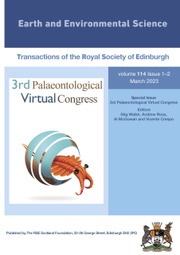No CrossRef data available.
Article contents
IX. On a New Optical and Mineralogical Property of Calcareous Spar
Published online by Cambridge University Press: 17 January 2013
Extract
It has been long known to those who have studied the optical properties of Calcareous Spar, that there are numerous specimens of that mineral which form a multiplicity of images, affected with the most brilliant colours. These colours were considered by Malus, and other philosophers, as the colours of thin plates, and were supposed to be produced by a film of air, included in accidental fissures or fractures within the crystal. I have already shewn, from numerous experiments, that this opinion is erroneous, and that the various colours with which the images are affected, arise from the transmission of polarised light, through an extremely thin film or stratum of calcareous spar, which has different thicknesses in different specimens, but which has an invariable position, being always parallel to a plane passing through the longer diagonals of the rhomboidal faces.
- Type
- Research Article
- Information
- Earth and Environmental Science Transactions of The Royal Society of Edinburgh , Volume 8 , Issue 1 , 1818 , pp. 165 - 169
- Copyright
- Copyright © Royal Society of Edinburgh 1818
References
page 165 note * See Phil. Trans. 1815, p. 270.
page 169 note * See Phil. Trans. 1816, p. 72, 73. where some analogous experiments are described.


